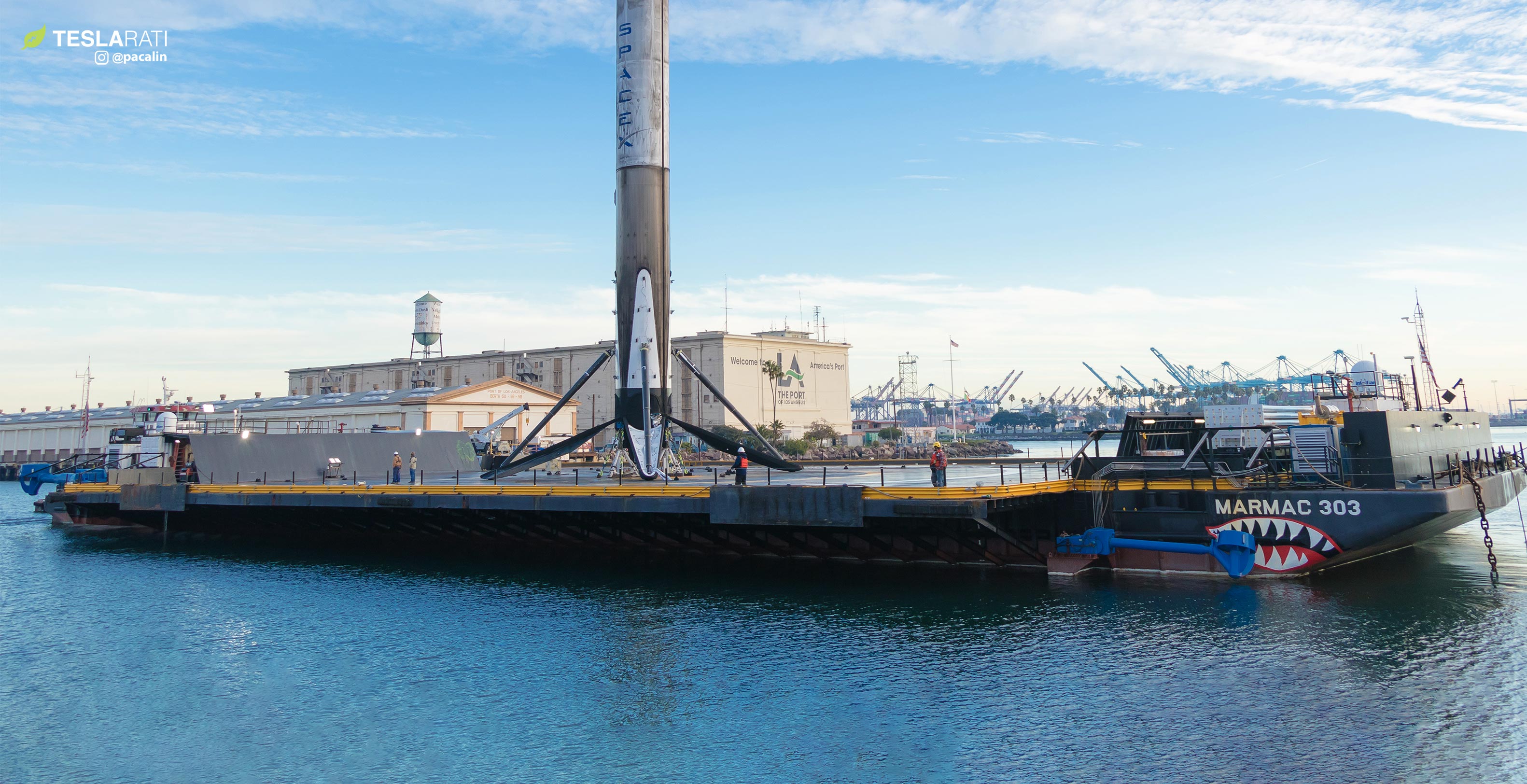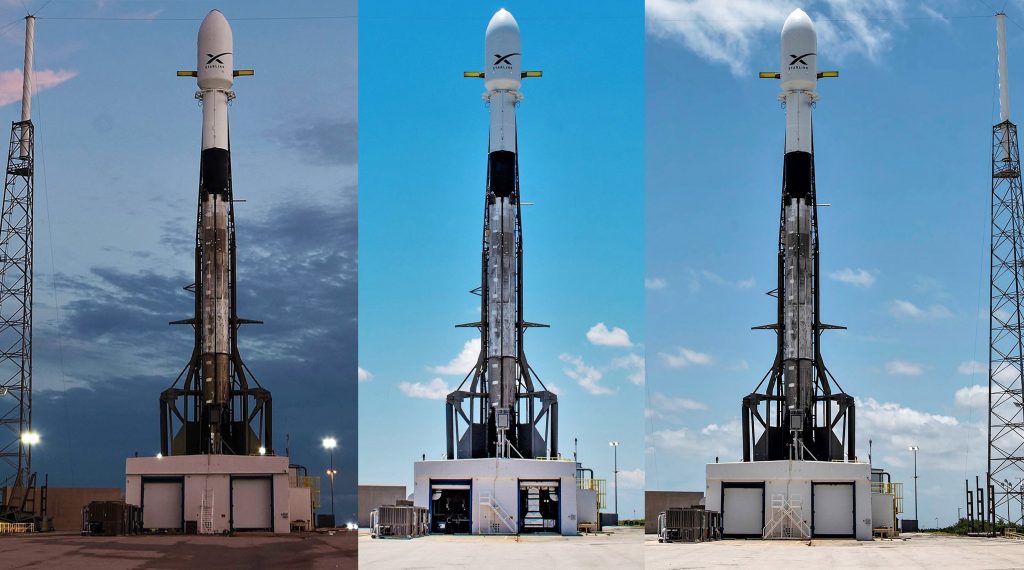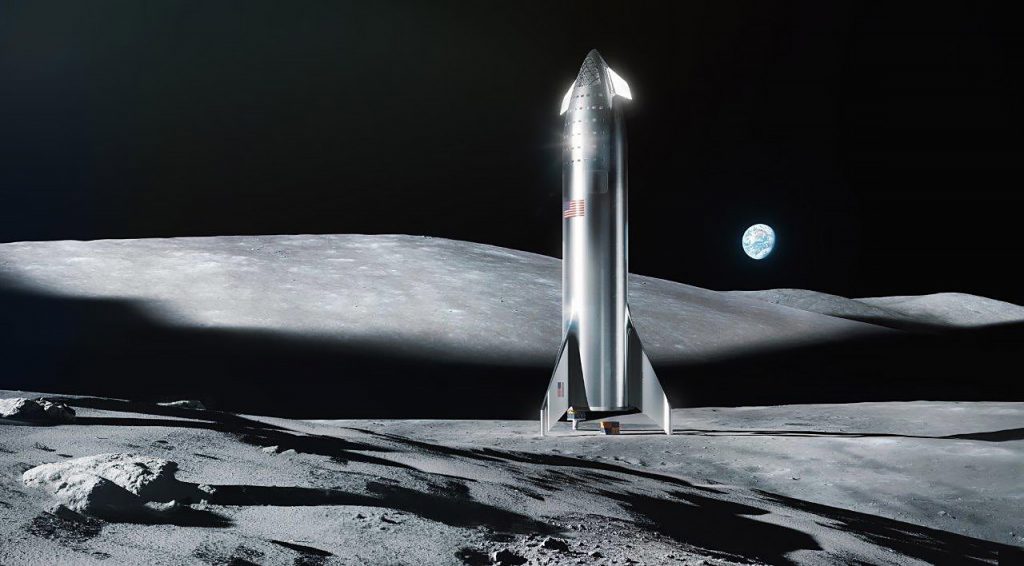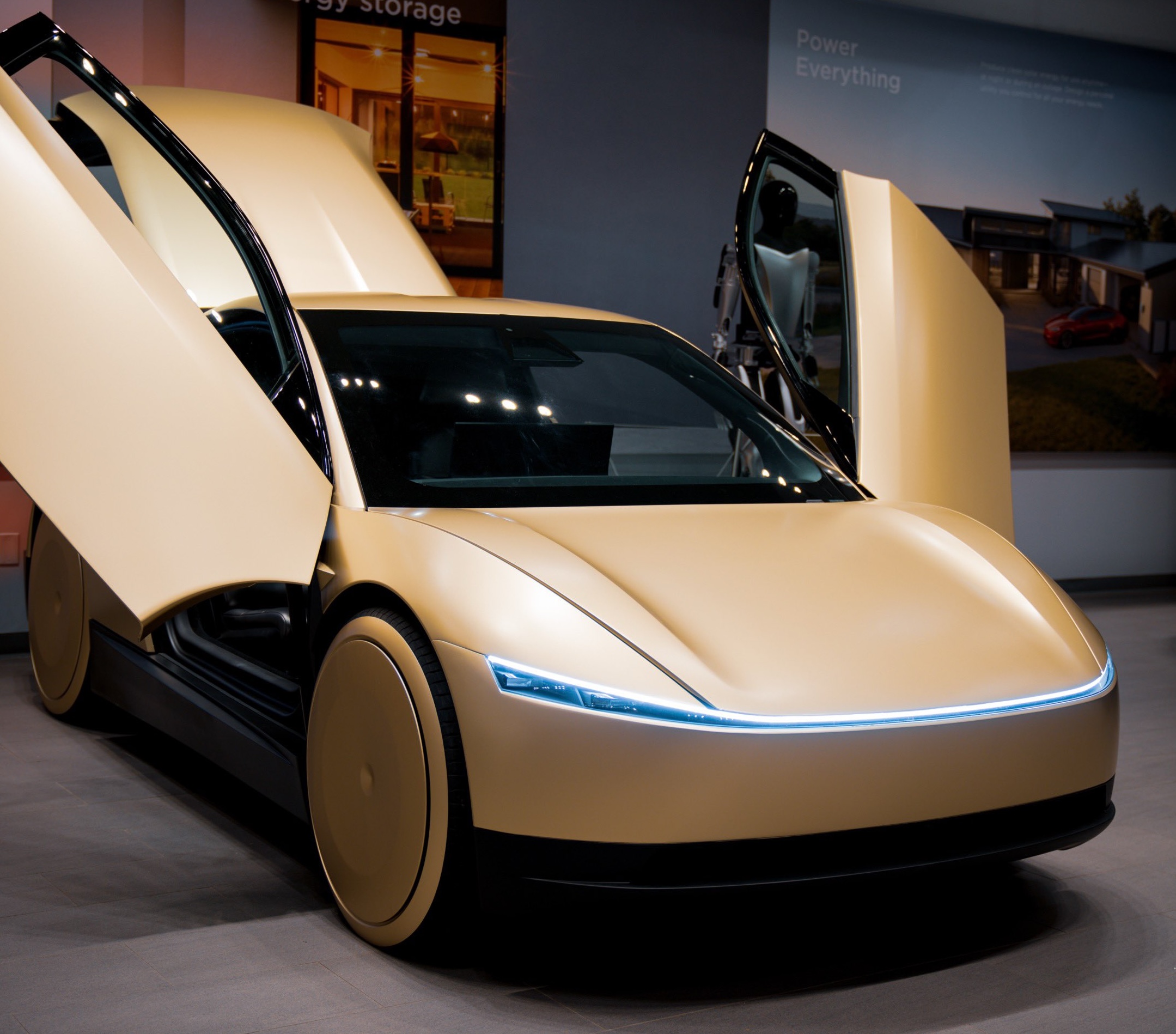

News
SpaceX sends Falcon 9’s West Coast drone ship to the Panama Canal in surprise move
In a surprise turn of events, SpaceX has decided to send Just Read The Instructions (JRTI) – one of the company’s two autonomous spaceport drone ships (ASDS) – from Port of Los Angeles to either the Gulf or East Coast.
The likely destination: either Port Canaveral, Florida or Port of Brownsville, Texas. This move comes as the company enters a major lull in launch activities from its West Coast SLC-4 pad, situated in California’s Vandenberg Air Force Base (VAFB). Lacking manifested launches, SpaceX has gone as far as redistributing almost all of its VAFB-based launch team and laying off those that could not move to Texas or Florida. As early as the first half of 2020, this major move east could easily culminate in the end of all West Coast SpaceX fleet activity, aside from a rare fairing retrieval or two.
On June 12th, SpaceX successfully launched what is expected to be its last West Coast mission for at least 6-9 months, while drone ship JRTI was most recently used to recover a VAFB-launched Falcon 9 booster during the January 11th launch of Iridium NEXT-8. Unexpectedly, it appears that Falcon 9 B1049.2’s landing aboard JRTI will be the drone ship’s last West Coast recovery for quite some time.

On August 1st, the approximately 300 foot by 170 foot converted barge departed its well-worn Port of Los Angeles berth behind tugboat “Alice C”. In fact, the drone ship’s departure went unknown for a solid 12-24 hours before a member of the unofficial SpaceX subreddit (/r/SpaceX) discovered paperwork filed with the Panama Canal Authority for an August 15th passage.
Back in January 2019, SpaceX fairing recovery vessel Mr. Steven (now GO Ms. Tree) – in a bit of what now is obvious foreshadowing – began a very similar ~5000 mi (8000 km) journey, traveling from Port of LA to Port Canaveral via the Panama Canal. Mr. Steven, however, is a far faster ship and sustained a solid 15-20 knots (17-22 mph) over the entire voyage, while drone ship JRTI – towed the entire way – will have to suffice with an average speed less than half that.
Where to?
Assuming a day-long canal passage, JRTI’s journey to Port Canaveral or Brownsville would take no less than three weeks (~22 days) from start to finish, indicating a likely arrival at the unknown final destination in the third week of August. The two probable destinations, Texas and Florida, would both arguably make sense.
In Florida, SpaceX drone ship Of Course I Still Love You (OCISLY) is now tasked with handling the vast majority of SpaceX’s non-LZ booster recoveries, including Falcon Heavy center cores. In February 2018, CEO Elon Musk noted that a third drone ship (aside from JRTI & OCISLY) was “under construction” with the intention of allowing SpaceX to conduct Falcon Heavy launches where the center core is expended and both side boosters land at sea.
Perhaps SpaceX analyzed its fairly short West Coast manifest and decided that it would be even faster (and cheaper) to simply send JRTI East. Falcon Heavy’s next (public) launch is scheduled no earlier than late 2020, ruling out that as a primary motivation, but SpaceX is also about to begin operational Starlink launches that will demand an unprecedented cadence. Starlink’s cadence requirements could be so high that a second dedicated drone ship is necessary to prevent SpaceX’s internal manifest from delaying and generally disrupting its customers’ launches, thus explaining JRTI’s move.

At the same time, the spectacular pace of SpaceX’s orbital Starship prototype construction could very well demand the use of a large ocean-based landing platform in the near-term, at least according to Elon Musk’s recent comments on the subject of the first Starship test flights. Per Musk, either or both of SpaceX’s two Starship Mk1 (technically Mk1 & Mk2) prototypes could be ready for their first significant flights as early as September 2019, initially targeting altitudes of at least 20 km (12 mi).

Somewhat coincidentally, Starship’s tripod fin-legs – circa. a September 2018 design update – would actually almost fit inside the span of a Falcon 9 booster’s deployed landing legs (~18m diameter). This is to say that SpaceX’s two drone ships may already be large enough (give or take) to support Starship and Super Heavy booster landings. Given that the SpaceX plans to eventually put one or both of the in-work orbital Starship prototypes through an increasingly intensive series of high-speed, high-altitude (but still suborbital) tests before the first orbital flights, a drone ship may be necessary for the same reasons that not all Falcon 9 boosters can conveniently return to land during recovery.
Regardless of the ultimate purpose of drone ship JRTI’s move, it is undoubtedly a sign that things are about to get even more interesting and exciting in the world of SpaceX.
Check out Teslarati’s Marketplace! We offer Tesla accessories, including for the Tesla Cybertruck and Tesla Model 3.
Elon Musk
Tesla begins expanding Robotaxi access: here’s how you can ride
You can ride in a Tesla Robotaxi by heading to its website and filling out the interest form. The company is hand-picking some of those who have done this to gain access to the fleet.

Tesla has begun expanding Robotaxi access beyond the initial small group it offered rides to in late June, as it launched the driverless platform in Austin, Texas.
The small group of people enjoying the Robotaxi ride-hailing service is now growing, as several Austin-area residents are receiving invitations to test out the platform for themselves.
The first rides took place on June 22, and despite a very small number of very manageable and expected hiccups, Tesla Robotaxi was widely successful with its launch.
Tesla Robotaxi riders tout ‘smooth’ experience in first reviews of driverless service launch
However, Tesla is expanding the availability of the ride-hailing service to those living in Austin and its surrounding areas, hoping to gather more data and provide access to those who will utilize it on a daily basis.
Many of the people Tesla initially invited, including us, are not local to the Austin area.
There are a handful of people who are, but Tesla was evidently looking for more stable data collection, as many of those early invitees headed back to where they live.
The first handful of invitations in the second round of the Robotaxi platform’s Early Access Program are heading out to Austin locals:
I just got a @robotaxi invite! Super excited to go try the service out! pic.twitter.com/n9mN35KKFU
— Ethan McKanna (@ethanmckanna) July 1, 2025
Tesla likely saw an influx of data during the first week, as many traveled far and wide to say they were among the first to test the Robotaxi platform.
Now that the first week and a half of testing is over, Tesla is expanding invites to others. Many of those who have been chosen to gain access to the Robotaxi app and the ride-hailing service state that they simply filled out the interest form on the Robotaxi page of Tesla’s website.
That’s the easiest way you will also gain access, so be sure to fill out that form if you have any interest in riding in Robotaxi.
Tesla will continue to utilize data accumulated from these rides to enable more progress, and eventually, it will lead to even more people being able to hail rides from the driverless platform.
With more success, Tesla will start to phase out some of the Safety Monitors and Supervisors it is using to ensure things run smoothly. CEO Elon Musk said Tesla could start increasing the number of Robotaxis to monitors within the next couple of months.
Elon Musk
Tesla analyst issues stern warning to investors: forget Trump-Musk feud

A Tesla analyst today said that investors should not lose sight of what is truly important in the grand scheme of being a shareholder, and that any near-term drama between CEO Elon Musk and U.S. President Donald Trump should not outshine the progress made by the company.
Gene Munster of Deepwater Management said that Tesla’s progress in autonomy is a much larger influence and a significantly bigger part of the company’s story than any disagreement between political policies.
Munster appeared on CNBC‘s “Closing Bell” yesterday to reiterate this point:
“One thing that is critical for Tesla investors to remember is that what’s going on with the business, with autonomy, the progress that they’re making, albeit early, is much bigger than any feud that is going to happen week-to-week between the President and Elon. So, I understand the reaction, but ultimately, I think that cooler heads will prevail. If they don’t, autonomy is still coming, one way or the other.”
BREAKING: GENE MUNSTER SAYS — $TSLA AUTONOMY IS “MUCH BIGGER” THAN ANY FEUD 👀
He says robotaxis are coming regardless ! pic.twitter.com/ytpPcwUTFy
— TheSonOfWalkley (@TheSonOfWalkley) July 2, 2025
This is a point that other analysts like Dan Ives of Wedbush and Cathie Wood of ARK Invest also made yesterday.
On two occasions over the past month, Musk and President Trump have gotten involved in a very public disagreement over the “Big Beautiful Bill,” which officially passed through the Senate yesterday and is making its way to the House of Representatives.
Musk is upset with the spending in the bill, while President Trump continues to reiterate that the Tesla CEO is only frustrated with the removal of an “EV mandate,” which does not exist federally, nor is it something Musk has expressed any frustration with.
In fact, Musk has pushed back against keeping federal subsidies for EVs, as long as gas and oil subsidies are also removed.
Nevertheless, Ives and Wood both said yesterday that they believe the political hardship between Musk and President Trump will pass because both realize the world is a better place with them on the same team.
Munster’s perspective is that, even though Musk’s feud with President Trump could apply near-term pressure to the stock, the company’s progress in autonomy is an indication that, in the long term, Tesla is set up to succeed.
Tesla launched its Robotaxi platform in Austin on June 22 and is expanding access to more members of the public. Austin residents are now reporting that they have been invited to join the program.
Elon Musk
Tesla surges following better-than-expected delivery report
Tesla saw some positive momentum during trading hours as it reported its deliveries for Q2.

Tesla (NASDAQ: TSLA) surged over four percent on Wednesday morning after the company reported better-than-expected deliveries. It was nearly right on consensus estimations, as Wall Street predicted the company would deliver 385,000 cars in Q2.
Tesla reported that it delivered 384,122 vehicles in Q2. Many, including those inside the Tesla community, were anticipating deliveries in the 340,000 to 360,000 range, while Wall Street seemed to get it just right.
Tesla delivers 384,000 vehicles in Q2 2025, deploys 9.6 GWh in energy storage
Despite Tesla meeting consensus estimations, there were real concerns about what the company would report for Q2.
There were reportedly brief pauses in production at Gigafactory Texas during the quarter and the ramp of the new Model Y configuration across the globe were expected to provide headwinds for the EV maker during the quarter.
At noon on the East Coast, Tesla shares were up about 4.5 percent.
It is expected that Tesla will likely equal the number of deliveries it completed in both of the past two years.
It has hovered at the 1.8 million mark since 2023, and it seems it is right on pace to match that once again. Early last year, Tesla said that annual growth would be “notably lower” than expected due to its development of a new vehicle platform, which will enable more affordable models to be offered to the public.
These cars are expected to be unveiled at some point this year, as Tesla said they were “on track” to be produced in the first half of the year. Tesla has yet to unveil these vehicle designs to the public.
Dan Ives of Wedbush said in a note to investors this morning that the company’s rebound in China in June reflects good things to come, especially given the Model Y and its ramp across the world.
He also said that Musk’s commitment to the company and return from politics played a major role in the company’s performance in Q2:
“If Musk continues to lead and remain in the driver’s seat, we believe Tesla is on a path to an accelerated growth path over the coming years with deliveries expected to ramp in the back-half of 2025 following the Model Y refresh cycle.”
Ives maintained his $500 price target and the ‘Outperform’ rating he held on the stock:
“Tesla’s future is in many ways the brightest it’s ever been in our view given autonomous, FSD, robotics, and many other technology innovations now on the horizon with 90% of the valuation being driven by autonomous and robotics over the coming years but Musk needs to focus on driving Tesla and not putting his political views first. We maintain our OUTPERFORM and $500 PT.”
Moving forward, investors will look to see some gradual growth over the next few quarters. At worst, Tesla should look to match 2023 and 2024 full-year delivery figures, which could be beaten if the automaker can offer those affordable models by the end of the year.
-

 Elon Musk2 days ago
Elon Musk2 days agoTesla investors will be shocked by Jim Cramer’s latest assessment
-

 News1 week ago
News1 week agoTesla Robotaxi’s biggest challenge seems to be this one thing
-

 Elon Musk2 weeks ago
Elon Musk2 weeks agoElon Musk slams Bloomberg’s shocking xAI cash burn claims
-

 News2 weeks ago
News2 weeks agoTexas lawmakers urge Tesla to delay Austin robotaxi launch to September
-

 Elon Musk1 week ago
Elon Musk1 week agoFirst Look at Tesla’s Robotaxi App: features, design, and more
-

 Elon Musk2 weeks ago
Elon Musk2 weeks agoTesla Robotaxis are becoming a common sight on Austin’s public roads
-

 Elon Musk2 weeks ago
Elon Musk2 weeks agoSpaceX President meets India Minister after Starlink approval
-

 Elon Musk2 weeks ago
Elon Musk2 weeks agoxAI’s Grok 3 partners with Oracle Cloud for corporate AI innovation

















